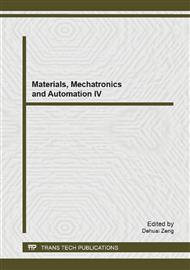p.3
p.7
p.13
p.18
p.24
p.29
p.33
p.38
Electrospun Porous ZnO Nanofibers for Glucose Biosensors
Abstract:
Porous 1 dimensional (1D) ZnO nanofibers were synthesized by electrospinning technology and sequent annealing process. The ZnO nanofibers have many nanopores in it and connect to each other to form a porous film. The diameters of the nanofibers are about 100 nm, and their lengths are so long as tens of millimeters. Owing to the porous nanofibers based matrix has 1D channels and high isoelectric point, the prepared ZnO porous film is wonderful platform to immobilize glucose oxidase enzyme for glucose biosensing. The as-fabricated biosensor exhibited high sensitivity (69 μA/mMcm-2), fast response (3 s) and low detection limit (10 μM), due to the nanomaterial with large surface-to-volume ratio for enzyme immobilization and excellent electrical properties. The biosensors can be fabricated controllably and repeatedly. These excellent results indicate the biosensors are attractive for application.
Info:
Periodical:
Pages:
3-6
Citation:
Online since:
June 2014
Authors:
Keywords:
Price:
Сopyright:
© 2014 Trans Tech Publications Ltd. All Rights Reserved
Share:
Citation:


